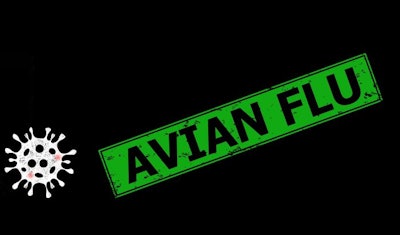
With highly pathogenic avian influeenza (HPAI) outbreaks in poultry continuing on the main islands of the Philippines — Luzon and Mindanao — other provinces are increasing controls. Key to preventing the spread of the infection to their territories is severe restrictions on the entry of potentially infected poultry products.
In the Western Visayas region, authorities in Iloilo City have extended a ban on some poultry products indefinitely. The only exceptions are transhipments of hatching eggs and day-old chicks through international airports and sea-ports, reports the Philippines News Agency (PNA).
Earlier this month, the province of Iloilo announced it will impose fines and even imprisonment on anyone bringing in poultry products from HPAI-infected areas without the appropriate documentation of freedom from disease. According to PNA, the minimum fine for the first offense is 5,000 pesos (PHP; US$89). Imprisonment for each infringement could be 5-15 days. Both punishments are at the court’s discretion.
In June, an executive order banned the entry of domestic and wild birds and their products from any areas infected with avian flu in Luzon or Mindanao.
Fears of egg shortages arising from the import restrictions have been allayed by authorities in another province of Western Visayas. PNA reports official assurances that Negros Occidental is self-sufficient in eggs.
Widespread avian flu outbreaks on Philippines’ main islands
Since the end of July, the nation’s veterinary agency has officially registered a total of 66 new HPAI outbreaks in poultry.
According to notifications to the World Organisation for Animal Health (WOAH), 63 of these were confirmed on the northern island of Luzon.
Reports cover cases confirmed between May 11 and July 19 — directly impacting more than 1.15 million poultry on Luzon. While the great majority of these latest outbreaks were in Pampanga, the virus was also detected over this period in seven other provinces. Affected were poultry across four regions — Central Luzon, Calabarzon, Cordillera Administrative Region, and Ilocos.
A recent hot spot for HPAI on the island has been the Culcul district of Pampanga, where the H5N1 HPAI virus was detected at 29 locations. Almost all were egg farms, each with between 3,700 and 116,000 laying hens. However, the disease was also detected among ducks, broilers and quail reared commercially, as well as some backyard flocks and at three live bird markets.
The remaining three HPAI outbreaks reported to WOAH were all in Sultan Kudurat. Located on the southern main island of Mindanao, this province belongs to the Soccsksargan region. Three flocks each of between 337 and 1,387 birds tested positive for the same virus serotype between mid-June and early July, according to the official notifications.
Based on reports to WOAH, 176 HPAI outbreaks have occurred in the Philippines so far this year. These have directly involved more than 1.45 million poultry. While one of the outbreaks involved the H5N8 virus serotype, the H5N1 variant was detected at all the other infected premises.
Two further outbreaks in Taiwanese hens
Since November of 2021, the number of locations in the territory where HPAI has been detected has reached 37. At each affected premises, birds have tested positive for the H5N2 virus serotype.
Latest to return positive results were flocks of laying hens at two farms in the town of Dacheng in Changhua county in mid-July. They bring to eight the number of reported outbreaks in this country so far this year.
Each with around 23,000 and 11,800 hens, they bring Taiwan’s total birds affected by HPAI since the start of last winter to more than 496,000.
Update on HPAI in Russia’s Far East
For the first time, the H5N1 HPAI virus has been detected in Magden oblast. This is according to the latest notification to WOAH from the Russian animal health agency.
Affected at the end of July was a flock of almost 7,800 chickens in this region of the Far Eastern federal district. Source of the virus is unknown.
Meanwhile, the disease situation has been officially declared closed in wild birds in Khabarovsk oblast. In mid-April, one wild bird found dead in this region in the Far Eastern district tested positive for the virus. No further cases have been reported since that time.
New human influenza case in China
In the Western Pacific region, one new infections with the avian influenza A(H9N2) virus serotype have been registered with the World Health Organization (WHO).
Dating back to April, the case involved a 12-month-old boy in China’s Sichuan province. His symptoms included a mild fever and cough, and he has since recovered. Although this virus originated in birds, there is no clear link with poultry in this case. Furthermore, none of the boy’s close contact were found to be infected.
Since the first case in December of 2015, 77 cases of human infection with avian influenza A(H9N2) including two deaths have been reported to WHO in this region.
Meanwhile, the number of confirmed human cases of avian influenza A(H5N6) in Mainland China since 2014 remains at 80. According to WHO, this includes 33 deaths.
View our continuing coverage of the global avian influenza situation.

















